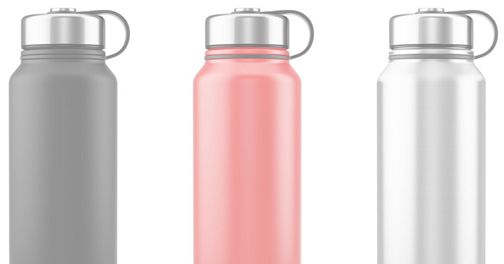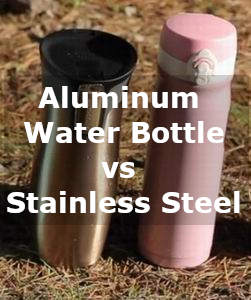
How do I properly clean the lid of a measuring cup?
Hydro bottles are very popular among people with active lifestyles. They are convenient, lightweight, and durable, making them ideal for travel, sports, and hiking. However, it is important to pay more attention to cleaning the bottle and its components (including the lid).
Because the cap of the Hydro Flask is in direct contact with the mouth and can harbor bacteria and other small microorganisms, cleaning the Hydro Flask cap is at least as important as cleaning the bottle itself. This article describes the materials and tools needed to clean a meth flask and how to do it properly and effectively.
Properly cleaned caps protect the bottle and its life cycle, making it more convenient and comfortable to use.
How do I clean the lid of a Hydro Flasks bottle?
Hydro Flasks bottle lids play an important role in keeping drinks warm and preventing spills. However, they can also be a breeding ground for bacteria and unpleasant odors if not properly cared for.
Step 1: Disassembly
Before cleaning can begin, the lid must be disassembled. Loosen the upper lobe from the reason and remove the gasket.
Step 2: Cleaning
Clean the lid using soap or mild detergent and a sponge. Pay special attention to hard-to-reach areas and be careful not to scratch the surface of the lid if using an abrasive.
Step 3: Bleach
If there is a light-colored surface on the edges and deposits are found on it, the lid can be bleached. To do this, mix equal parts water and hydrogen peroxide and soak the lid in this solution for 30-60 minutes. Then rinse the lid as thoroughly as possible with water.
Step 4: Dry and reassemble
Allow the lid and gasket to dry naturally until the lid and gasket are completely dry. Then reassemble the cap and screw it onto the bottle.
By following these basic steps, you can quickly and effectively clean the lid of your Hydro Flasks bottle and keep the lid looking its original appearance.
Why is it important to clean the cap?
Hygiene. Bottle ends are spaces where bacteria, dust, and dirt can accumulate. Failure to clean the lid regularly can lead to a variety of infections when using liquor in a vial.
Alteration of the taste of the drink. The presence of remains and bacteria on the bottle lid can affect the taste and quality of the drink. In addition, unpleasant aromas may adversely affect hunger er and enjoyment of the drink.
Extend the life of the vial. Cleaning vial lids will undoubtedly keep them in good condition for a long time. Regular cleaning of bottles and lids prevents surface damage and contamination.
Hygiene and protection of others. If you share a vial with someone, you can be sure it is clean and safe. Cleaning the vial lid will certainly help prevent infections and diseases from being spread between you and your loved ones.
Extra Protection. Cleaning field bottle lids reduces the risk of infection by bacteria, microbes, and other harmful germs. This is even more important for athletes who drink large amounts of water from field bottles over time.
Improved Sanitation
Keeping field bottles clean and sanitary is just as important as paying attention to thermal management of drinks. Vial lids should be rinsed regularly and their condition should be monitored. For example, even small impurities can cause bacteria and harmful microorganisms to freeze.
To clean off any unpleasant aromas that may occur inside the vial, a solution of water and vinegar can be used. You will need to pour water into a quarter of the vial and add a tablespoon of vinegar. The vial should then be allowed to stand for several hours. To completely clean the lid of the vial, you can use a soft toothbrush or nozzle to clean the glass.
- Use soft brushes only.
- Do not use aggressive cleaning agents.
- Clean the vial regularly.
Remember that keeping the lid on the vial ensures a long service life, protects quality and guarantees preservation of the contents.
Remove odors and flavors
Before using fresh anhydrous, it is advisable to prepare the plant to remove odors and flavors. To do this, a mixture of water and vinegar or baking soda can be used.
If after a while the vial has an unpleasant aroma or taste, it should be cleaned with a special bottle cleaner. These can be purchased at any sports food store.
Baking soda and water can also be used to clean aromatics and flavor vials. To do this, pour the baking soda into the bottle, pour water over it, and let it sit for several hours or overnight. The bottle should then be rinsed thoroughly and allowed to air dry.
If the aroma or flavor of the vial does not disappear in the usual way, one can try rinsing the bottle with boiling water and adding a small amount of lemon juice or acetic acid. This method will definitely help remove stubborn aromas and flavors.
- Clean the vial of aromas and flavors:
- Introduce bottle cleaner.
- Wash with baking soda and water.
- Wash with boiling water and lemon juice or acetic acid.
Clean the lid with a smooth brush
If you want to clean the Hydroflaska lid with a soft hair brush, you will need a brush of average strength. This help to avoid damaging the surface of the cover.
- To begin with, remove the lid from the bottle and soak it in warm, soapy water. This will certainly help to soften any dirt or grime on the lid.
- Next, brush the surface of the lid. The movement should be flexible and tidy to avoid ruining the lid. Remember to rinse both the outside and inside of the lid where dirt and bacteria can remain.
- Once complete, rinse the lid with warm water to ensure that all soap and dirt is removed. Next, dry the lid with a clean towel and allow it to air dry for a few minutes.
- Now you can fill the bottle again and enjoy the most delicious water all day long!
- Cleaning the lid of a hydro flask can be a challenge. That is why it is important to choose the right brush.
An ideal brush should be smooth and flexible. That way, the lid will not be scratched or damaged. A pointy brush head will definitely help in cleaning tight spaces.
To clean the lid of a hydro flask, you can use all kinds of brushes
– Honey Brush: This brush has a long handle and a soft head that makes it easy to reach all corners of the lid.
– Nylon Brush: This brush is calmer but still slippery in front of the lid. It can also clean more impure areas.
– Kitchen brush: this image can be used to clean the lid, but be careful when using it as it can be more harsh.
It is important to remember that brush selection depends on personal preference and needs. Choose brushes that are soft, flexible, and not too stiff, so they will not damage the lid surface or clean it safely.
Cleaning Procedure
Step 1: Remove the hydraulic flask in its individual components. Remove the cap, ring, and silicone seal.
Step 2: Wash all parts of the bottle with hot and soapy water. Do not use hard-surface abrasives or sponges to prevent scratching the bottle surfaces.
Step 3: Remove the vial lid from the drink or water remains. Use a small brush or toothbrush for inaccessible areas.
Step 4: Wash the lid, ring and silicone seal in warm and soapy water. Make sure there are no rays of light on the lid to clean.
Step 5: Wash all parts of the vial and lid with bair rewind water. Make sure virtually no residue or residue of cleaning product remains.
Step 6: Dry all parts of the vial and lid in air without the use of cloths or pieces. It is possible to speed up the drying process by using some special drying techniques.
Step 7: Assemble the bottle and lid. Ready, your hydraulic flask is clean and ready to use!
Clean the lid with a cleaning agent
If the ends of your hydro flask are quite dirty, you may need to use a cleaning liquid. Do not use aggressive cleaning products such as chlorine or ammonia. This may destroy the fabric from the lid. Instead, use a mild cleaning agent such as cleaning liquid or acetic acid.
To clean the lid of a hydraulic flask with a cleaning solution, mix a small amount of soap with warm water. Apply this mixture to the lid and clean the lid with a smooth sponge. Then wash the lid thoroughly with warm water.
If you wish to use acetic acid, mix equal parts vinegar and water. Apply the mixture to the lid, let it stand for a few minutes, and then rinse the lid thoroughly with warm water.
Remember that cleaning the lid of the hydro flask is part of taking care of the bottle. Clean the cap and the entire bottle regularly to ensure that it lasts as long as possible.
Choose products that are not harmful to your health
When cleaning the caps of Hydro Flasks bottles, you can only use methods that are non-hazardous to your health. The maintenance of the product depends on the preservation of its quality and properties.
First, you should choose a detergent. Prefer products that are non-toxic and free of harmful chemicals. The introduction of natural cleansing gels is an excellent option.
It is important not to use abrasive materials to clean the vial lid. Abrasive materials can damage the fabric and cause it to lose its airtightness. For cleaning, you can use a smooth spongy cloth or a special brush designed for cleaning stainless steel products.
The use of detergents containing adrenaline, caffeine, or other catalysts is not recommended. Contact with the water in the bottle may adversely affect human health.
Remember that the correct choice of cleaning agents will protect your health and preserve the bottle’s properties.
Cleaning Procedure
Step 1: Use a soft sponge or brush and a small amount of mild detergent diluted with warm water.
Step 2: Gently wipe the vial lid with your hand. Do not apply excessive pressure when mopping.
Step 3: Rinse off any soap residue with warm water and dry the vial lid with a clean towel.
Step 4: If necessary, wash the vial lid with a desensitizing tonic to prevent skin irritation.
Do not immerse the Hydro Flask lid in water or use abrasive or chemical cleaners. The coating and insulation may be damaged. To maintain quality and durability, wash the bottle after each use.
Cleaning Plastic Lids in the Dishwasher
Automatic dishwashers are a great way to remove dirt and drink residue from plastic lids. However, there are a few rules to follow to avoid damage to the lid.
First, make sure the edges are dishwasher-safe. Some lids are made of materials that cannot withstand steam and risk bending or melting in the dishwasher. Check the lid’s instructions to make sure it is dishwasher-safe.
Then remove all parts and rings from the lid if it is not dishwasher-safe. Dishwasher use will increase the likelihood of discoloration and damage.
Finally, place the lid on the top basket and run the machine in the plastic dish position. Do not place the machine in combination with metal dishes, etc., as this may cause scratches or damage.
When the dispenser is finished operating, remove the lid from the dishwasher and inspect for damage. If the end is clean and undamaged, it can be used brutally next time.
Select the appropriate program
To clean the lid of a hydro flask bottle, you must choose the best program. In this case, you must use a soft cleaning method that does not damage the lid cloth and does not affect the quality of the bottle.
There is no need to apply brutal methods with strong chemicals purchased in the store, such as acetone, salt, and cleaning solutions. These chemicals can damage the lid coating and affect the appearance of the lid.
We recommend choosing mild cleaning products such as hand soap or mild baby shampoo. These will certainly remove all kinds of dirt and food scraps without damaging the watertight Thermos bottle lid.
If you are unable to clean the hydro flask lid yourself, you can use special aids or equipment such as a smooth brush or special water cleaner. This program allows you to quickly and efficiently clean the lids of the resulting plants without damaging the Thermos bottle lids or affecting the quality of the Thermos bottles.
Cleaning Procedure
1. Prepare materials. To clean Thermos Bottle lids, you will need a soft brush, detergent, and hot water.
2. Remove the lid. Screw on the cap of the vial and disassemble it into its individual parts: cap, ring, and silicone insert.
3. Immerse the lid in warm water, soak in soap, and let sit for a few minutes. Then carefully scrub all dirt with a soft brush.
4. Rinse the lid with water. Rinse the lid under running water to remove any soap and dirt residue.
5. Dry the lid. Place the lid on a clean paper towel to dry naturally.
6. Return the lid. When the edges are completely dry, replace all material back to its original position.
If these steps are followed and the lid of the hydraulic flask can be easily cleaned, it will remain in good condition for many years.
Quick Answers:
Q: How do I select the proper tools to clean a hydro flask lid?
Answer: you can use a soft sponge or water and soap to clean the lid of the hydro flask. To avoid damaging the coating on the lid, we recommend using a scrub brush. You can also use special cleaning products for bottles and vials available in stores.
Q: Can I wash the lid of my dishwasher hydro flask?
ANSWER: Yes, the lid of the hydro flask is dishwasher safe. However, it is recommended that the lid be carefully washed at water temperature to avoid breaking the lid. Inspect the lid before applying it again to make sure it is not damaged in any way.
Q: How can I prevent odors and contamination of the hydro flask lid?
A: To prevent odors and stains on the Hydro Flask lid, we recommend that you wash the lid regularly by hand or in the dishwasher. After use, remove the lid with a dry cloth and store it separately from the bottle. If necessary, special cleaning methods for bottles and vials can be used to remove flavor and dirt residues.
Question: Is it possible to replace the caps on the hydro flasks?
Answer: Yes, it is possible to replace the Hydro Flask caps. You can purchase different types of caps on the brand’s official website or in special stores. Before purchasing a cap, you must make sure that it is compatible with your bottle.
Q: How can I keep heat in my hydro flask if I use a cap?
Answer: If you are using a lid, make sure the lid is properly closed to retain the heat of the drink in the hydro flask. To do this, check the lid seal for cracks or damage. It is also recommended that you pour hot water into the bottle for a few minutes before applying the lid. This way it will warm up and the drink will stay warmer longer.






